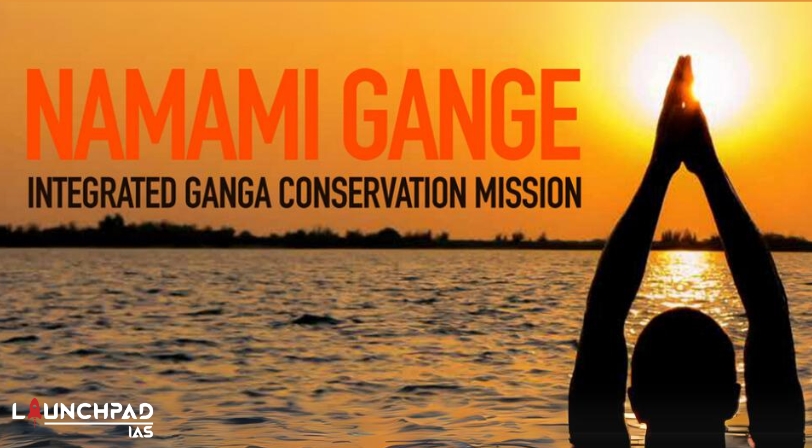Namami Gange, also known as the National Mission for Clean Ganga (NMCG), is a flagship program launched by the Government of India to clean and rejuvenate the Ganga River, one of India’s most important and sacred rivers.
- It operates under the Ministry of Jal Shakti and is implemented by the National Mission for Clean Ganga (NMCG) along with state governments, local authorities, and various stakeholders.
- The program is being implemented by the National Mission for Clean Ganga (NMCG), and its state counterpart organizations, known as State Program Management Groups (SPMGs).
- The implementation of the program has been divided into entry-level activities (for immediate visible impact), medium-term activities (to be implemented within 5 years of time frame), and, long-term activities (to be implemented within 10 years).
- Entry-level activities include river surface cleaning, medium-term activities will focus on arresting the municipal and industrial pollution entering into the river, and in the long-term, providing adequate flow to the river is envisioned through the determination of e-flow, increased water-use efficiency, and improved efficiency of surface irrigation.
- It has an Rs. 20,000-crore, centrally-funded, non-lapsable corpus and consists of nearly 288 projects.
- To implement the program, a three-tier mechanism has been proposed for project monitoring comprising of:
- A high-level task force chaired by the Cabinet Secretary assisted by NMCG at the national level,
- State-level committee chaired by the Chief Secretary assisted by SPMG at the state level and
- District-level committee chaired by the District Magistrate.
Why is the Namami Gange program needed?
- Rising in the Himalayas and flowing to the Bay of Bengal, the river traverses a course of more than 2,500 km through the plains of north and eastern India.
- The Ganga basin – which also extends into parts of Nepal, China, and Bangladesh – accounts for 26% of India’s landmass.
- Thus, the River Ganga has significant economic, environmental, and cultural-spiritual value (one of India’s holiest rivers), whose significance transcends the boundaries of the basin.
Achievements under the program
- Creating Sewage Treatment Capacity: 98 sewage projects have been completed in the states of the UK, UP, Bihar, Jharkhand, West Bengal, etc.
- Creating River-Front Development: The projects for the construction, modernization, and renovation of 267 Ghats/Crematoria and Kunds/Ponds have been initiated.
- River Surface Cleaning: River Surface cleaning for collection of floating solid waste from the surface of the Ghats and River and its disposal are afoot and pushed into service at 11 locations.
- Biodiversity Conservation: A cadre of volunteers (Ganga Praharis) have been developed and trained to support conservation actions in the field
- Public Awareness: Ganga Praharis and Ganga Doots are engaged in spreading awareness through planting trees, cleaning ghats, Ganga Aarti, painting, and poems.
- Industrial Effluent Monitoring: Regulation and enforcement through regular and surprise inspections of Grossly Polluting Industries (GPIs) is carried out for compliance verification against stipulated environmental norms.
- Deploying the best available knowledge and resources across the world: Countries such as Australia, United Kingdom, Germany, Finland, Israel, etc., have been collaborating with India for Ganga rejuvenation
The Ganga River System:
- The headwaters of the Ganga called the ‘Bhagirathi’ are fed by the Gangotri Glacier and joined by the Alaknanda at Devprayag in Uttarakhand.
- At Haridwar, Ganga emerges from the mountains to the plains.
- The Ganga is joined by many tributaries from the Himalayas, a few of them being major rivers such as the Yamuna, the Ghaghara, the Gandak, and the Kosi.



